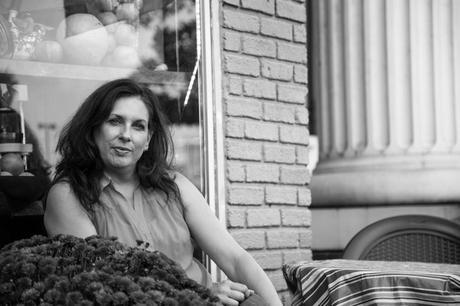
Charles Dickens is known for, among other things, the length of his novels. At the fortieth chapter of his story, The Tale of Two Cities, readers wonder, “Is this ever going to end?!” Susan’s tale is like a Charles Dickens book, only more interesting. She started sewing before she was big enough to reach the pedal and at her current ripe age, she’s still sewing strong. She’s worked for almost every kind of clothing company you can think of, makers of tutus, intimates, baseball uniforms, dresses and skirts, which means that her skills are boundless. She calls herself the jack of all trades, but I think she’s more than that. While readers are feverish for Dickens’ final conclusion, I was begging for another chapter of Susan’s life when our interview came to a close.
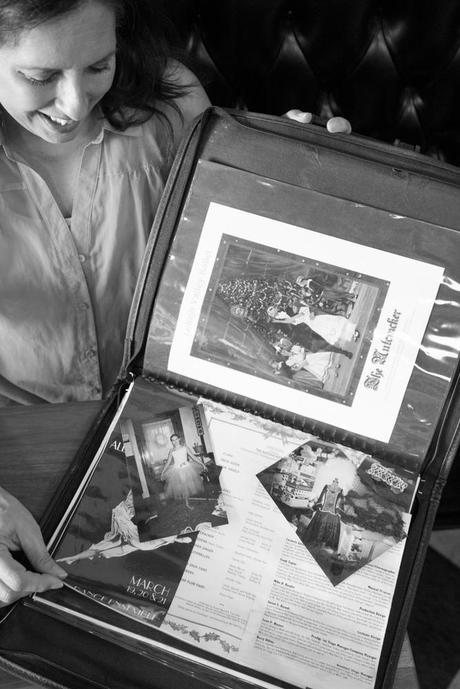

Hi, my name is Susan Pawlikowski and I learned to sew when I was 4-years old. My mother tells me that I would sit on her lap while she sewed and guide fabric under the presser foot. When I was 7-years-old, my parents gave me a child-size sewing machine and my father built a cabinet for it that had a top that flipped up and an arm that flipped out so I could bring my machine up and down just like mom’s. It only sewed a chain stitch, but it was a lot of fun! When I was 9-years old, my mother bought a new machine, so I inherited hers. At that age, I was still little bodied, so I sewed with the machine on the floor (I sat cross-legged and used my knee to push the pedal). I made mostly doll clothes, so you could consider Barbie my first dress form. When I was in junior high, I was determined to learn how to sew everything. From the moment I got off the school bus to about 30 minutes before I went to bed, I was sewing. I somehow finished my homework each night, but barely.
I made my first wedding gown when I was a senior in high school, which would have been 1978, for a girl who graduated one year ahead of me. The silhouette of the dress was simple and resembled a Jessica McClintock frock with its abundance of lace and ruffles.
I later got married and had children. When my daughter was 4-years-old, she became very involved in ballet and practiced at The Ballet Guild of Lehigh Valley, a very professional dance studio that was associated with The School of American Ballet. The studio took a trip to The New York City Ballet every year and during one trip, I toured the costume department. One thing led to the next, and I was sewing costumes for them. I made simple, white tutus that were used as a base – “tops” were attached depending on the performance. I think one year I sewed close to 100 of them! Because they were associated with The School of American Ballet, I got my hands on a few Karinska costumes. Oh, those were beautiful!
While I was making tutus, I also made wedding gowns on the side and when my daughter grew out of ballet, I started working for a bridal studio located in Bethlehem, Pennsylvania called Eugenia Couture. While working there, I met Monique Lhuillier when she was up-and-coming and made some very beautiful gowns. But it was short-lived because I needed a full-time job and this was only part-time.
After Eugenia, I starting working at a small company in New Jersey called Blue Fish. It was a neat business in that their products were organic, all cotton, garment dyed, and hand-printed in-house. Artists created the designs, carved the wooden blocks, and mixed the paints and ceramicists made one-of-a-kind buttons. One big hurdle that I made while working there was learning how to use different industrial machines.
After Blue Fish, I started working for Majestic Athletic, a company that made only baseball uniforms and this is where I was introduced to tech packs. There was no Web PDM, so construction steps were outlined in Microsoft Excel. I was exposed to Pantone colors for the first time and was so surprised how every element of a uniform had to match. At the time, baseball players were just starting to swap out their Majestic cotton t-shirts, which they wore under their uniforms and hated because they were so thick, for shirts that wicked away their sweat. We sourced our fabric and we were able to produce t-shirts that wicked and that the ball players could comfortably wear under their heavy uniforms (Under Armour wasn’t as big as it is today and fabrics that had the ability to wick were few and far between). Unfortunately, they did not get their football license agreement renewed and many of us were let go. This brought me to Cupid Intimates.

It was very interesting working for Cupid because the company was moving away from old fashioned girdles, and I mean dead serious girdles with zippers, to more modern lingerie and undergarments. I learned to patternmake on the computer and I found myself in my element. One company we looked to for construction techniques was La Perla and we often inspected their samples to see how they were made. One La Perla sample that I still remember, a teddy, layered the cup fabric in the most unique way that gave structure to the bust but still had a soft and a comfortable fit. The underwire treatment was also interesting. Instead of using a thick, heavy channeling, a bias strip of lightweight fabric was sewn to the cup seam on both sides and left floating (underwire was inserted in bias channeling). But I found myself not growing there and decided to move on.
Next, I started working at Anthropologie as a technical designer for skirts and shortly after I began, I was transferred into the pattern room. Because I was trained on Gerber and they only used Lectra, there was a bit of a learning curve for me when I moved departments. The head pattern maker took me under her wing and I stayed in this department for many years. I wanted to get back into technical design though, and when a position opened up that I was interested in, I transferred back into tech. I stayed at Anthropologie for almost 8 years, but the two hour commute was too much for me, and I eventually left to work at Lilly Pulitzer, which was closer to where I live.
I quickly found that Lilly was the not place for me. There is a particular culture that works at Lilly, the sorority and Barbie doll type, and I didn’t fit in. I kept my resume current and eventually, I found a job as a technical designer for home decor.

Like I said, I am a technical designer for home decor – sofas, chairs, dining room furniture. I’m doing what I love again, pattern work in Gerber, and the job is interesting in a different way. The patterns are a lot bigger and the fittings are somewhat strange because I’m checking if the arm of a slipcover fits, which is far different than adjusting the rotation of the arm of a jacket . And the sample size isn’t a size 6! Two cushions, three cushions, one cushion, small chair, big chair, those are the sizes I deal with now.
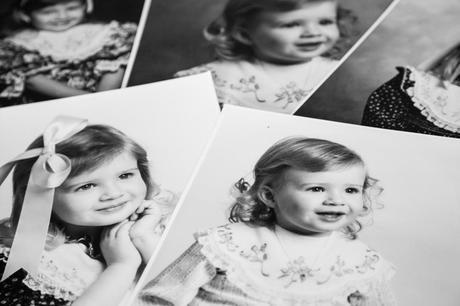
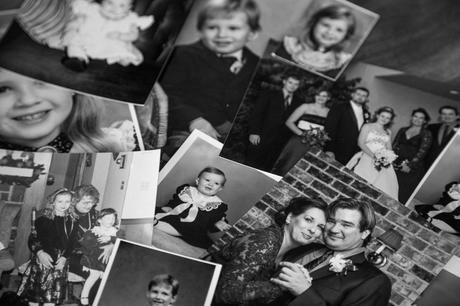


My daughter’s wedding dress. Inspired by a design found in a magazine, Betsy, my daughter, worked her own magic on beautiful pearl-embroidered lace by adding fine crystals over the lattice design areas. While she worked this, I draped a deep, ivory, silk matte satin into asymmetric folds. Together, we also made a t-shirt, duct tape dress form, so we could continue working on the dress without her being present. At each fitting, we tweaked the design, making it one-of-a-kind! Pleated straps that tipped the shoulder were added and the lace was placed only at the center front bodice, at the left hip following the asymmetric pleating of the skirt, and at the center back skirt. The skirt was full with a custom length train… not too much, but just enough is how she described it. A simple elbow length veil secured to a comb disappeared into her updo. She said it was my crowning achievement….I’ll take that!
Another prized project of mine was a detachable collar I made for a little girl I knew and still know, my Betsy. I wasn’t working at the time, so I was looking for new sewing skills to learn. I applied the lace trimming onto the collar using french hand sewing techniques and I used entredeux stitching, again by hand, to inset the lace. There was also a lot of hand embroidery on it. She and I were so in love with the collar that I made her a new dress, each made with varying fabrics and prints, every year for 5 years. I called it her birthday outfit and she wore it for her birthday portraits.

My mother was a draftsman and always had a drawing board in front of her or nearby. She saw it and she drew it. She also drafted her own patterns and encouraged me to change what I didn’t like. Swap out the sleeves or bodice of one pattern, buy a different pattern, make your own outfit, she pushed me to turn things that I didn’t like into things that I did like.

It was 1947 when my mom married my dad and on her train ride into the city everyday, where she worked for his floor covering company as a kitchen designer, she carried her in-progress wedding dress in a legitimate, old school train case and worked on completing it entirely by hand. The final gown had a scalloped bodice and scalloped capped sleeves, which again, were sewed by hand. I still have it, but it’s in pretty rough shape; you can see each tiny hand stitch in her work.
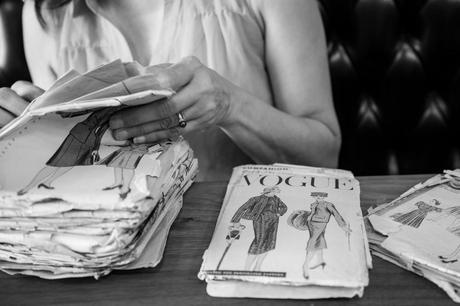
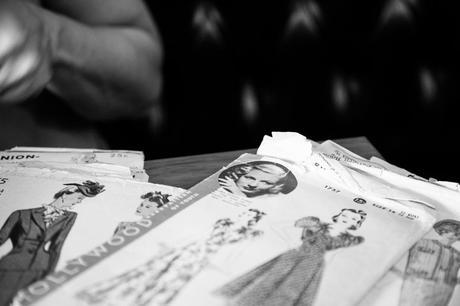


I’ve had many mentors. One was the head pattern maker at Anthropologie. She was a brilliant pattern maker and great teacher. She was patient with me and very hands on when teaching. She had a saying, “Do what you know is right,” that seems simple to do, but can be hard in practice. She also taught me the importance of balance. Always, always, always check the balance of a pattern because if it is off, the garment will not fit and will swing every which way.
Another mentor was an evil woman at Cupid Intimates. She truly was evil and created a dreadful working environment! She was the extreme guardian of the computer system and ensured that all employees saved everything correctly and that the library of patterns was always up to date. Nothing was overwritten and there was a new version for everything. Regardless of her personality, she taught me to understand an organized tiered computer library and the importance of correctly saving and archiving your work.
Then there was Billie Hamilton, my high school sewing teacher. She taught me about grain perfection. By picking out one thread on the cross grain at two points (the process is similar to gathering), folding the fabric in half lengthwise, sewing next to the line with the picked-out thread (cross grain) as well as the selvedge, prewashing, and then ironing or steaming, you can ensure that the fabric is on grain before cutting. This became super important when I sewed a lot of draperies. Because the patterns for drapes are so large, if the grain is off, it will hang to one side. This technique is also helpful when sewing with stripes and plaids. By offsetting the lines when folding, matching your design, you can ensure that the lines match when cutting.

I’d like to take a high-level corset class so that I can sew period pieces or costumes. I became interested in it when I saw the trailer for the movie, The Young Victoria. In it, the costume designer discusses how corsets and pantaloons were shaped differently throughout different centuries – bust lines and waistlines were placed higher or lower to mold the look of the period and the thickness of waists, bustline shapes, and even bustling were different depending on the time period. Because of my experience with sewing tutus and wedding gowns, I know a little bit about constructing these types of garments using boning and channeling, but I want to take it to the next level and become very skilled.

